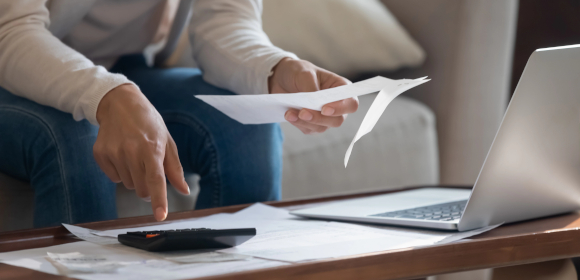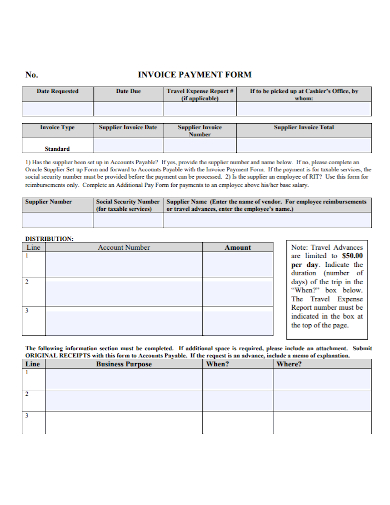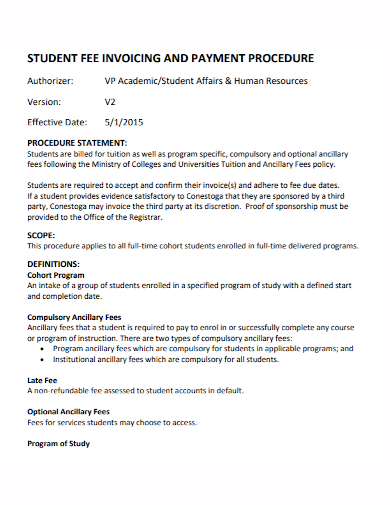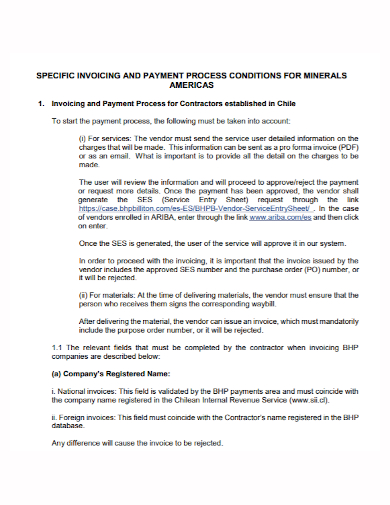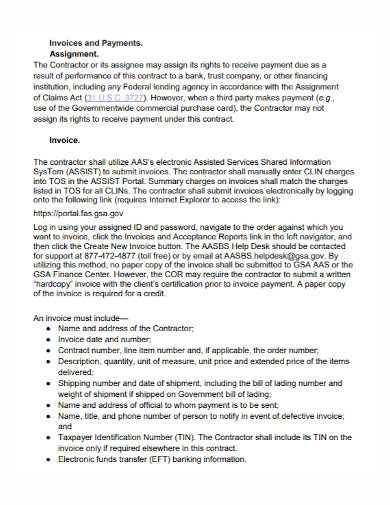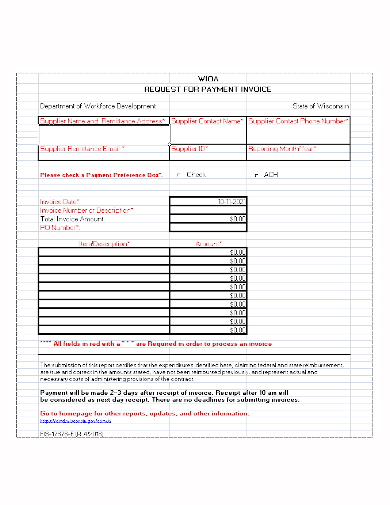Invoices can be used to bill for one-time tasks or recurring work, although they are most commonly used to request payment when work is performed and where the customer is a repeat customer. In the past, invoices were printed on paper, either handwritten or typed, and then mailed. Many firms have embraced email to speed up delivery in recent years. However, the most technologically advanced businesses today use specialized software to generate e-invoices right away, with information flowing seamlessly between the supplier and the buyer. It’s important to make it a habit to check invoices as soon as you receive them from your vendors, so they don’t get misplaced and the specifics of the transaction are still fresh in your mind.
10+ Payment Invoice Samples
What is an invoice? An invoice is a bill sent by a business to a customer or client, requesting payment for goods or services. Invoices often include a description of the products you’re billing for, as well as payment terms and other details. Businesses need to preserve information about sales and income for tax and accounting purposes, thus invoices are a crucial element of bookkeeping. Receipts (which recognize payment) and purchase orders are not the same as invoices (which notify intent to buy goods and services).
1. Payment Invoice Template
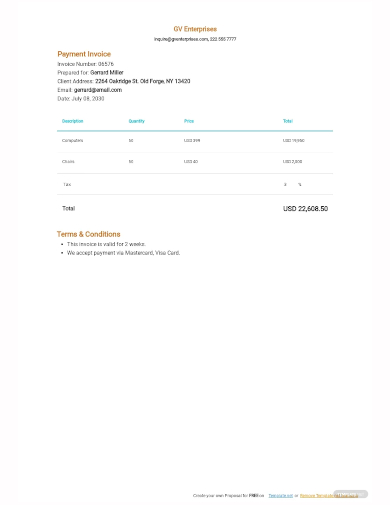
2. University Payment Invoice Template

3. Extend Time on Payment of Invoice Template
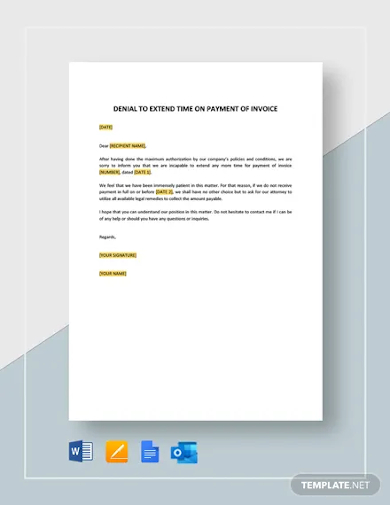
4. Payment Invoice Form
5. Supplier Payment Invoice
6. Quality Payment Invoice Review
7. Student Fee Payment Invoice Procedure
8. Payment Contract Invoice
9. Contractor Payment Invoice
10. Payment Invoice Assignment
11. Request for Payment Invoice
How to Create a Payment Invoice
- Make the invoice look professional – The first step is to put together your invoice. You can create your invoice using a word processor or Excel, or you can use one of the free invoice templates listed above. Depending on the program you’re using, there may even be sample templates on your word processor. If feasible, add your logo and colors after using professional fonts and styling that match your business.
- Mark your invoice – Make sure your consumers are aware that they are receiving an invoice. Simply putting the phrase invoice at the top of your document may increase your chances of getting paid on time, as it distinguishes your payment request from other documents your client may receive. A unique identification number is required on your invoice. This is for your records, as you should keep track of all the invoices you’ve sent so you don’t end up with duplicates. You can employ a number sequence that steadily rises in size. You might even put letters in front of a number to identify a specific customer.
- Add company name and information – This includes both the information about your firm and the information about the company you’re billing:
– the name, address, and phone number of your company
– the name and address of your customer’s business, as well as a contact’s name so that it reaches the correct person
– If you’re a limited business, your registered office address and company registration number, as well as the registered name
– If you’re a limited company, keep in mind that if you wish to include the names of your directors on the invoice, you must include the names of all directors. - Put a description of the goods/services you are charging for – These descriptions don’t have to be long, but they should include enough information for your customers to understand what they’re paying for. After all, if consumers don’t understand what they’re being charged for, they’re more likely to challenge the invoice, causing a payment delay. After you’ve given each item a detailed description, you should provide the quantity and pricing.
- Include the dates as well – On your invoice, you must include some dates. These are the following:
– the day you delivered your goods or rendered your service (the supply date)
– the invoice’s creation date
– Include the supply date in the description of your goods or service, and include your name, address, and contact information at the top of the invoice. - Add the money owed – You must include the total amount owed in addition to the costs of individual goods or services. Also, if you and your customer have agreed on a discount, make a note of it on the invoice and deduct it from the overall cost. Include the VAT amount as well, if appropriate.
- Mention payment terms – Although you should have agreed on payment conditions with the customer ahead of time, it’s a good idea to include them on the invoice as well. So, if you anticipate being paid within a particular amount of time, include a reminder on the invoice. More importantly, make a mental note of how your buyer should pay. You’ll almost certainly want the customer to make the payment to a bank account. If that’s the case, make sure you provide your banking information. Clear payment conditions, as well as making it simple for clients to pay you, should benefit your company’s cash flow by encouraging prompt payment.
FAQs
Why do you have to choose the right payment method?
Examine the payment options accepted by the provider and select the one that is the most cost-effective and handy for your small business. If your business credit card, for example, allows you to earn cashback or travel points every time you use it, it can be the ideal option for paying your invoices, as long as you pay off your credit card account when it’s due.
What is an invoice address?
An invoice address is the buyer’s legal address or the address where they receive mail. It differs from a shipping address (also known as a delivery address), which is the location where goods or services will be delivered. These addresses may be different in some circumstances, and they may be the same in others.
If you want to see more samples and formats, check out some payment invoice samples and templates provided in the article for your reference.
Related Posts
FREE 10+ Sample Invoice for Consulting Services in PDF
FREE 3+ Cake Invoice Samples [Wedding, Birthday, Order]
FREE 9+ Agriculture Invoice Samples in MS Word | MS Excel | Google Docs | Google Sheets | PDF
FREE 10+ Work Invoice Samples in MS Word | Google Docs | Google Sheets | MS Excel | PDF
FREE 10+ Professional Invoice Samples in MS Word | Google Docs | Google Sheets | MS Excel | PDF
FREE 10+ Cleaning Invoice Samples in MS Word | Google Docs | Google Sheets | MS Excel | PDF
FREE 6+ Massage Invoice Samples in MS Word | MS Excel | Google Docs | Google Sheets | PDF
FREE 10+ Work Order Invoice Samples in MS Word | MS Excel | Google Docs | Google Sheets | PDF
FREE 5+ Legal Service Invoice Samples in MS Word | MS Excel | Google Docs | Google Sheets | PDF
FREE 10+ Hourly Invoice Samples in PDF | MS Word | Google Docs | Google Sheets | Excel
FREE 5+ Architecture Invoice Samples in MS Word | MS Excel | Google Docs | Google Sheets | PDF
FREE 10+ Customer Invoice Samples in MS Word | MS Excel | Google Docs | Google Sheets | PDF
FREE 14+ Construction Invoice Templates in MS Word | PDF
FREE 10+ Delivery Invoice Samples in MS Word | MS Excel | Pages | Numbers | Google Docs | Google Sheets | PDF
FREE 10+ Electrical Invoice Samples in MS Word | Pages | Google Docs | Google Sheets | Numbers | MS Excel | PDF
